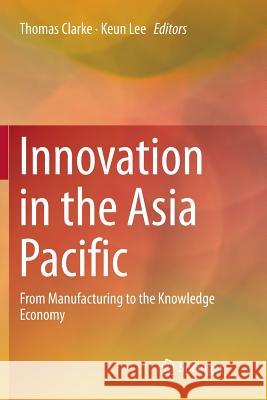Innovation in the Asia Pacific: From Manufacturing to the Knowledge Economy » książka
topmenu
Innovation in the Asia Pacific: From Manufacturing to the Knowledge Economy
ISBN-13: 9789811355165 / Angielski / Miękka / 2018 / 328 str.
Kategorie:
Kategorie BISAC:
Wydawca:
Springer
Język:
Angielski
ISBN-13:
9789811355165
Rok wydania:
2018
Wydanie:
Softcover Repri
Ilość stron:
328
Waga:
0.47 kg
Wymiary:
23.39 x 15.6 x 1.8
Oprawa:
Miękka
Wolumenów:
01
Dodatkowe informacje:
Wydanie ilustrowane











